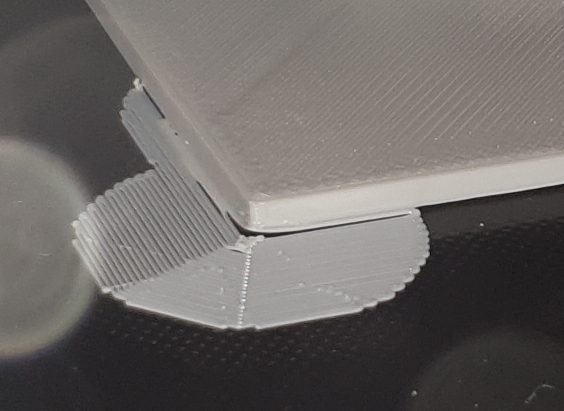I'm trying to set up an enclosed (custom enclosure) Prusa i3 style printer for ABS, but having a fair amount of difficulty preventing the part corners from curling.
Detailed specs:
- Geetech A10 (generic Prusa clone) w/ PEI heatbed
- Custom enclosure
- Slic3r software
- ABS filament (obviously!)
- 247 °C hotend temp
- 115 °C heated bed first layer, 110 °C for others
- Fan on for layer 3 and above
Verified heatbed temperature with calibrated IR imager.
Thus far I have been unable to prevent parts from separating from the heatbed during print, primarily at the corners where stress is concentrated. I've tried various heatbed temperatures from 90 °C to 115 °C, lower hotend temperatures (which just made the problem worse and caused complete print failure), cleaning the PEI surface with alcohol, etc. to no avail. I'm even seeing this to some extent with Benchy, it shows up as a lift to the stern and bow (slight bend parallel to the keel) -- the print is otherwise basically perfect.
I've attached an image of the more extreme curling -- yes, I should probably be using mouse ears on a part like this, but I see the same thing on parts that shouldn't require mouse ears.
What is the best way to fix this particular problem? Temperature adjustments, brims, rafts, something else?


